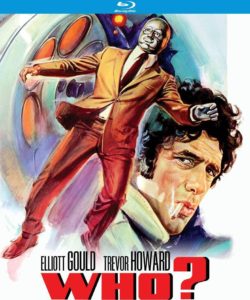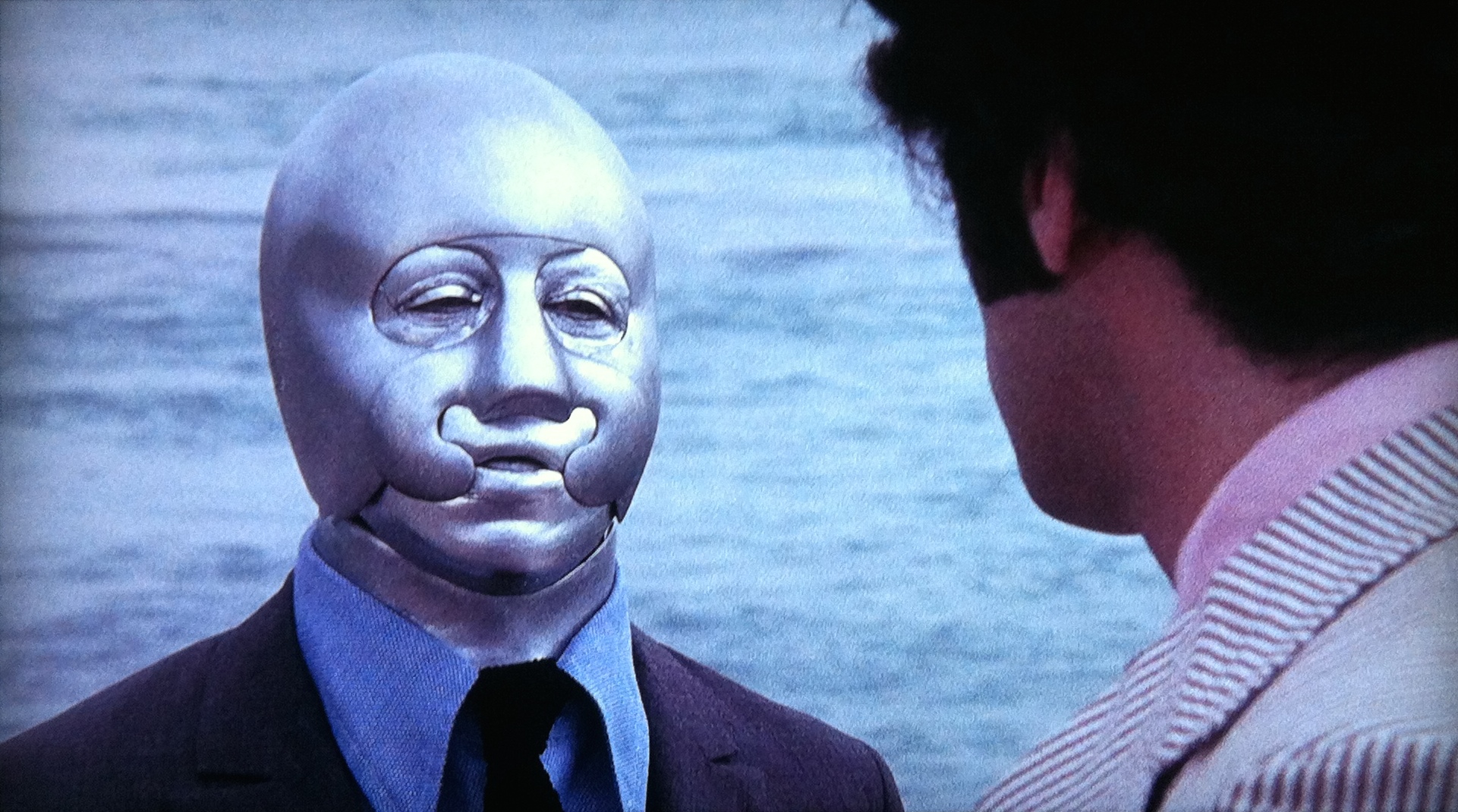Gould Surmises The Who?, While Audience Ponders The Why?
DIRECTED BY: JACK GOLD/1975
STREET DATE: JANUARY 3, 2017/KINO LORBER

The cornball title has other venerable inquisitive movies like Quo Vadis? and Who’s Afraid of Virginia Woolf? lamenting “there goes the neighborhood.” The title automatically sets you up for thin thrills, and there’s no disappointment as a pre-credit sequence features the stock-footagest montage of a fiery car crash this side of a “don’t drink and drive” PSA. Story’s about an American scientist, Lucas Martino, recovered from that facsimile of a near-fatal accident by the East German government and rescued from death by a radical surgical procedure that replaces most of his body, including his entire face and skull, with metal. Elliott Gould is there at the German checkpoint to receive Martino back into the American fold, and the rest of the movie is a sort of mix of soft sci-fi and psychological thriller, as Gould and company try to divine if this is the real Martino or just a very goofy Communist plot to get a peek across the border. This is the grist of bored Saturday afternoons, with a plot small enough for its obvious shoebox budget to carry, the only real requirement being that at least the metal man should look cool. Sadly, what we get could best be described as a bionic walrus.
While Gould, never not fun to watch, slums post-Marlowe in an overly-enunciating authority role, the miracle of the movie is that the metal scientist is played for actual believability and pathos by a very good Joseph Bova, no doubt channeling all the demeaning rancor of never once getting to show his real face for the entire film. He impresses his small frame and stifled, hand-pocketed fury upon us, mostly with the expressive power of his huge eyes and soft, insistent voice, so that more than once, a shouting interrogation scene begs to end with a kind hug and a “there there.” We’re let inside Martino’s mind, not just from the loads of information we learn about him through flashbacks (all shot entirely from his POV, lest the movie’s titular query spoil too soon), but from a performance that eventually reaches underneath the cold war dime novel premise and drudges up universally vexing questions of identity.
The central question of the movie is uttered mid-way by a no-name henchman caught in a moment of philosophical reverie: “Is there something a man has that makes people recognize him no matter what he looks like?” It’s the thematic rug that brings the whole shambling intrigue together, and the most redeeming sequences of the film are ones that aren’t afraid to make us wonder about ourselves a little bit – are we the memories we make, or are we who others believe us to be? The best sequence in Who? features a long series of Martino, in intercut locations and times, being primed against his will by the Germans for future American infiltration and being aggressively questioned by the Americans regarding his true identity. The panic swells in Martino’s voice as he, a seemingly innocent man with all his faculties in crystal order, tries to negotiate basic torture from two different angles, and his struggle to be believed – not to put too heavy a burden on such a slight film – becomes the existential cry of modern man, metal or otherwise. This is not a great movie, but it has its themes in order, asks the questions we all ask, and leaves you feeling like you’ve just been to the most bizarre therapy session of your life.
The images in this review are not representative of the actual Blu-ray’s image quality, and are included only to represent the film itself.

